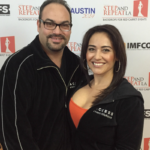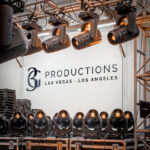If you want a peek into the corporate culture of any company, get to know its CEO. For Electronic Theatre Controls, better known as ETC, the CEO is the guy in the Birkenstocks who was once described by a family friend as “the one who talks.” (His brother and co-founder of the company was described by the same friend as “the one who thinks.”) The telling part is that the CEO, Fred Foster, is the one who tells the story. It’s a testimony to the kind of humor and humility you’ll find in this seriously successful man and the company he leads. On the surface, it might seem that the success of the company is entirely due to the success of its products. After all, 2.3 million of the company’s Source Four-brand fixtures have been sold. You can hardly find a performing arts space today that doesn’t have them, and for good reason. The Source Four spotlight totally redefined the industry’s expectations of the ERS and changed a commonly used 1000-watt fixture into a more efficient 575-watt fixture that produces more light. Their introduction in 1992 started a virtual transformation of the entire industry, one shipment at a time.
And if all the 1.5 million ETC Sensor dimmer modules that have been shipped were stacked one on top of the other, they would reach a height of over 36 miles. Most of those dimmers are controlled by one of the many consoles the company has manufactured over the years, starting with the Concept in 1982 and culminating, to date, in the Eos, Ion, Congo, Congo jr, SmartFade and Smart Fade ML consoles.
There was a time, however, long before the Eos and Congo, when the Foster brothers could only dream of making a living designing and selling technologically advanced theatrical lighting equipment. While they were attending the University of Wisconsin-Madison, the brothers and friends Gary Bewick and Jim Bradley built a computer-based controller with the dream of one day selling it to the Metropolitan Opera. The four friends built the hardware and programmed the software around an Intel 8080 microprocessor running at 2 MHz. That was in 1975, and this prototype would be the first seed of what would grow to be ETC.
Bill Foster was the first president of ETC, but he soon answered a different calling, pursuing a physics Ph.D. and later a political career. This year he was elected to the U.S. House of Representatives, after working as a scientist at Fermi National Accelerator Laboratory for 22 years. Fred Foster, on the other hand, left school to continue his entrepreneurial dreams, developing and marketing his lighting products. Since day one, he has been busy in the ETC offices, building the company with the help of his talent-heavy staff.
Through a series of acquisitions, ETC has become a highly regarded, internationally recognized brand. In 1990, ETC acquired Lighting Methods, Inc (LMI), taking them from a controller company to a dimming and control manufacturer. Two years later, ETC acquired the intellectual property for the Source Four fixture and suddenly became an end-to-end provider of theatrical lighting systems. The acquisition of Arri GB in London established their European presence in 1995, and they expanded into Asia in the same year.
The astute observer in the late 1990s might have speculated that the one missing piece of the puzzle was automated lighting. And indeed, rumors swirled around the industry about the company’s plans to enter that market. In 1998, ETC acquired the Irideon line of exterior color-wash fixtures and architectural moving-yoke fixtures. Never living up to ETC’s technical standards however, the line was eventually discontinued. Instead, ETC went to work on its own, unique Source Four-based automated fixture. Noted programmer Tom Littrell (first ever to use moving lights, 1981 Genesis tour), came on board to shepherd ETC’s Source Four Revolution to market in 2003.
But ETC’s products are only part of the picture. Dig a little deeper and you’ll find a company culture inspired by genuine concern for employees, customers, the industry, and the environment alike. It is perhaps the only lighting manufacturer whose mission statement contains the word “fun.” It reads brightly: “ETC will develop great new products for the lighting world, listen to customers and give them more than they expect, have fun and make money.”
ETC’s Web site captures the philosophy of the company in a few lines. There’s a bit about Company Management (people), Company History and Awards (products), Corporate Philanthropy (giving), and the Environmental Policy (caring).
What the Web site doesn’t reveal is how ETC recruits and retains its talent. Many of the almost 700 employees are long term, very talented people who actively contribute not only to the company, but also to the industry. Steve Terry, vice president of R&D, has been a leader in the industry and helped develop many of its standards since his days as the co-owner of Production Arts in New York. Today, he sits on several ESTA-related committees, as does Dan Antonuk, ETC R&D network products development manager, who chaired the ACN Task Group.
Two of ETC’s marketing product managers, Sarah Clausen and consultant Anne Valentino, came to ETC having worked with other console manufacturers. Dennis Varian, R&D senior technical product manager, came from Light & Sound Design. The three were instrumental in bringing ETC’s recent Eos and Congo console lines to market, and these are among the first brands to readily support ACN, the newest control protocol in the industry.
“In the past few years, ETC has listened harder than ever to what the industry was saying about the need for innovation in control systems,” says David Lincecum, ETC marketing manager. “As a result we’ve overhauled our control offerings. It’s been big change, and we’re very pleased with how the market has responded.”

If you visit ETC’s new 328,000-square-foot headquarters, you will immediately get it. The “fun” that was put in the mission statement is more than just a philosophy; it’s a way of life for this company, starting the moment you set foot inside. The atrium is a full-blown Town Square straight from the 1940s, complete with a life-size recreation of the café in Edward Hopper’s Nighthawks painting. A 40-foot façade features a theater marquee and an art deco skyscraper, masking the company’s offices and various departments. Every scenic-designed detail brings Town Square to life.
Foster directed the design group that included architects, builders and ETC employees to conceive a facility that would serve the culture of ETC. The first phase of the building — 250,000 square feet — was completed in 2004. The headquarters’ dual purpose is to act as hub of the company’s global operations and as an homage to the art of lighting and entertainment technology. The second phase, completed this August, added another 78,000 square feet of manufacturing, shipping and inventory space, plus more parking to help keep up with the ever expanding company.
“With this expansion, we’re extending our original design principal to continue to draw the ever-growing ETC community together,” says Foster.
As fun as the Town Square is, it is only one piece of the puzzle. The rest of the ETC headquarters houses a large manufacturing area plus the company’s offices for administration, sales, tech support, and R&D. It’s impressive to witness the scope of the operation firsthand, and to see how upbeat the employees seem to be. They seem genuinely interested in the jobs and are eager to tell you about their latest projects and accomplishments. And it’s not uncommon for Foster himself to give you a tour — serving as your personal guide through ETC’s console museum, which is a long hallway filled with every model of board ever produced by ETC, most of which are still working.
ETC has enjoyed a real measure of success in its 33-plus years in business. But success was not handed over on a silver platter; it was wrought by a talented staff, with hard work, vision, and fun. And the continued success of the company could be put to the test when the patent for the Source Four expires in a couple of years. The company could be facing the biggest challenge yet, and how it responds could determine its future.
But ETC also has reason to be very confident. “At a time when many industries have been threatened or challenged by the economic downturn, ETC is enjoying sustained growth,” says Foster, “and that is allowing us to develop new technologies and explore new markets.”
It seems that ETC has always been a leader, and they’ve never been afraid to seek out the new. They were one of the first to jump into the ACN pool, and the odds are in favor of their continued success. If you ask Fred — the one who talks — he’ll probably tell you so.


